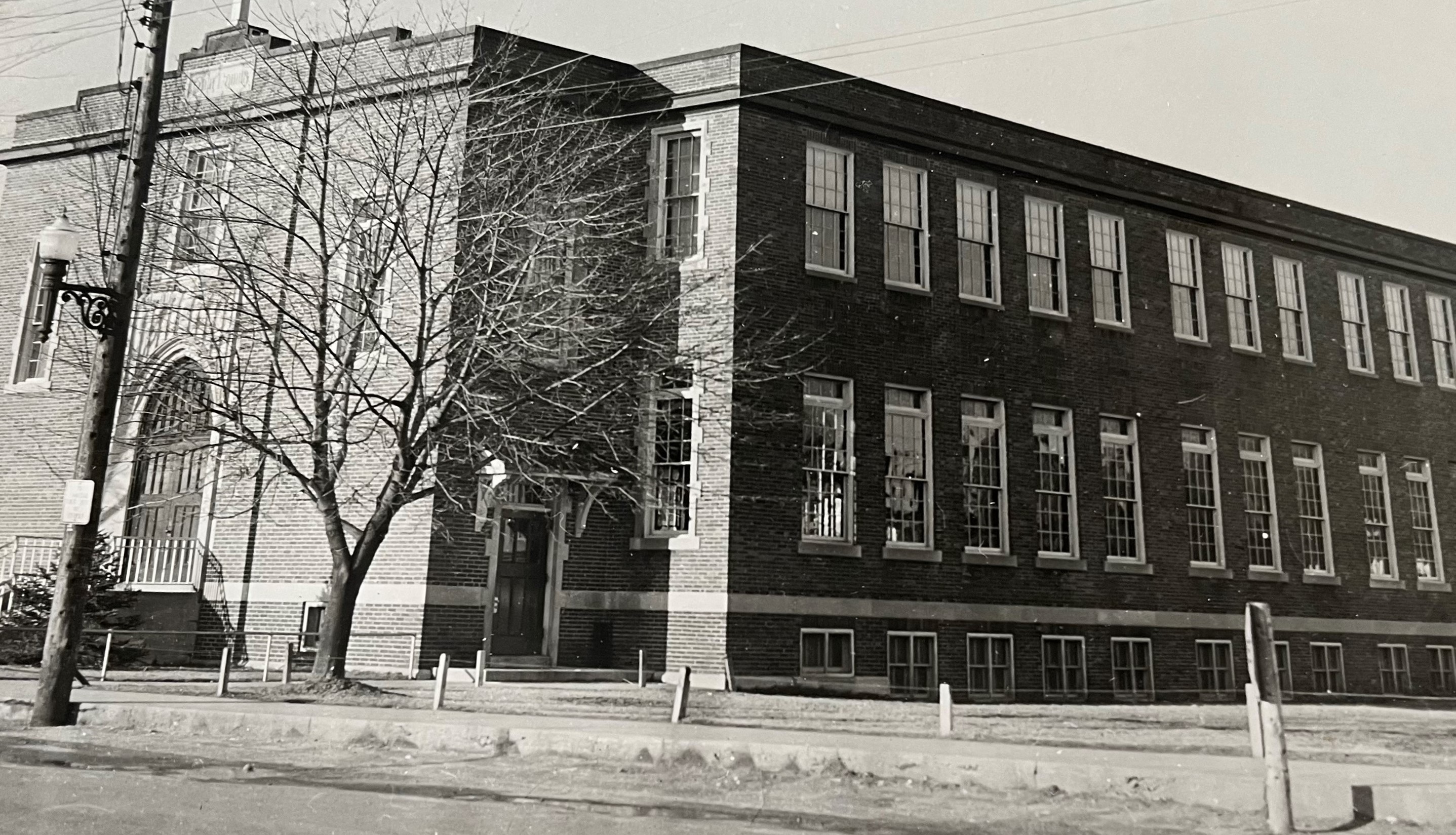
A Brief History of St. Thomas School

The need for places to worship grew for immigrants to the area in the late 1800’s and early 1900’s. Notre Dame de Lourdes Church and St. Ignatius were the first churches built, followed in the next 30 years by schools, larger churches, and the new Holy Family Church in 1923. Holy Family Church had a parish hall on the lower level, the church on the main level, and an elementary school on the upper level. “Holy Family Parish began its educational programs in 1923 with 294 students and by the 1930's the average enrollment was 500. An enrollment of 400 – 500 students continued until the mid-1960's. In 1970 the enrollment was 274. With the closing of St. Ignatius High School and the changes in the local economy along with the reduced numbers of sisters, brothers, and priests, the idea of consolidation for the three elementary schools became a major topic” (Bergeron, 2007 & Carlson, Sr., 2015).
In 1972, the decision was made to consolidate the three area Catholic schools to Holy Family School. “The St. Ignatius pastor, Fr. Adrian Palardy, suggested the name St. Thomas in honor of St. Thomas Aquinas, the patron saint of scholars" (Bergeron, 2007 & Carlson, Sr., 2015). On September 6, 1972, St. Thomas Consolidated School opened with a total enrollment of 395 students.
At the time, there were six religious teachers and six lay teachers with an average class size of thirty-three students. “The school housed grades one through six. Eighteen years later, Kindergarten was added to the program. Thirty-four years later, the Preschool program became part of the school. In 2007, after a vigorous process under the leadership of Principal Donna Jacques, the school was awarded a certificate of accreditation by the New England Association of Schools and Colleges, a first in the state of Maine. In 2016, the school expanded to include grade 7 and in 2017 grade 8 was added” (Bergeron, 2007 & Carlson, Sr., 2015).
In 2007, a regional cluster plan brought changes in the way the school was funded. “In spite of the changes, the parishioners of Sanford/Springvale, as well as, the community at large have always been generous in their support of the school. St. Thomas is most fortunate to have bus service provided by the city and additional funds for instructional support. The city also provides testing for students to identify learning disabilities and other issues which may impact a child's ability to learn” (Bergeron, 2007 & Carlson, Sr., 2015).
The survival of the school these past 52 years has been due in part to the leadership of the outstanding individuals who have dedicated themselves to the education and formation of the students who have passed through its doors: Sister Therese Berube, Sister Patricia Couture, Mr. Norman Provost, Brother Eugene Belisle, Mrs. Donna Jacques, Mrs. Jessica Rice and currently, Mrs. Angela Madigan. Mrs. Rose Marie Hill, Mr. Martin McKeon, and Mrs. Ericka Sanborn generously stepped in as interim principals when the need arose. Needless to say, the continued support of our parish priests and parishioners sustained the school community’s efforts.
“St. Thomas School has undergone many changes in its history. Even though changes have occurred, there are some things that will never change. St. Thomas School's mission is to teach and share the Catholic faith” (Bergeron, 2007 & Carlson, Sr., 2015).
Mr. Richard Bergeron, one of St. Thomas School's founders, wrote a history of the school in 2007. It was amended by Bruce Carlson, Sr. in 2015 for use on the school's website.
DEMOGRAPHICS
St. Thomas School is a PreK-8 school with 116 students. 70% of our families come from our hometown of Sanford/Springvale, Maine with 30% coming from 10 of our surrounding communities. Our population of students who qualify for free and/or reduced meal prices is nearly 10.5%. We host a student body from Catholic families (79%) and non-Catholic families (21%). Our community includes 1% American Indian/Native Alaskan, 0% Asian, 7% Black/African American, 2% Native Hawaiian/Pacific Islander, 82% White, 9% two or more races, 3% Hispanic/Latino, and 97% Non-Hispanic students.